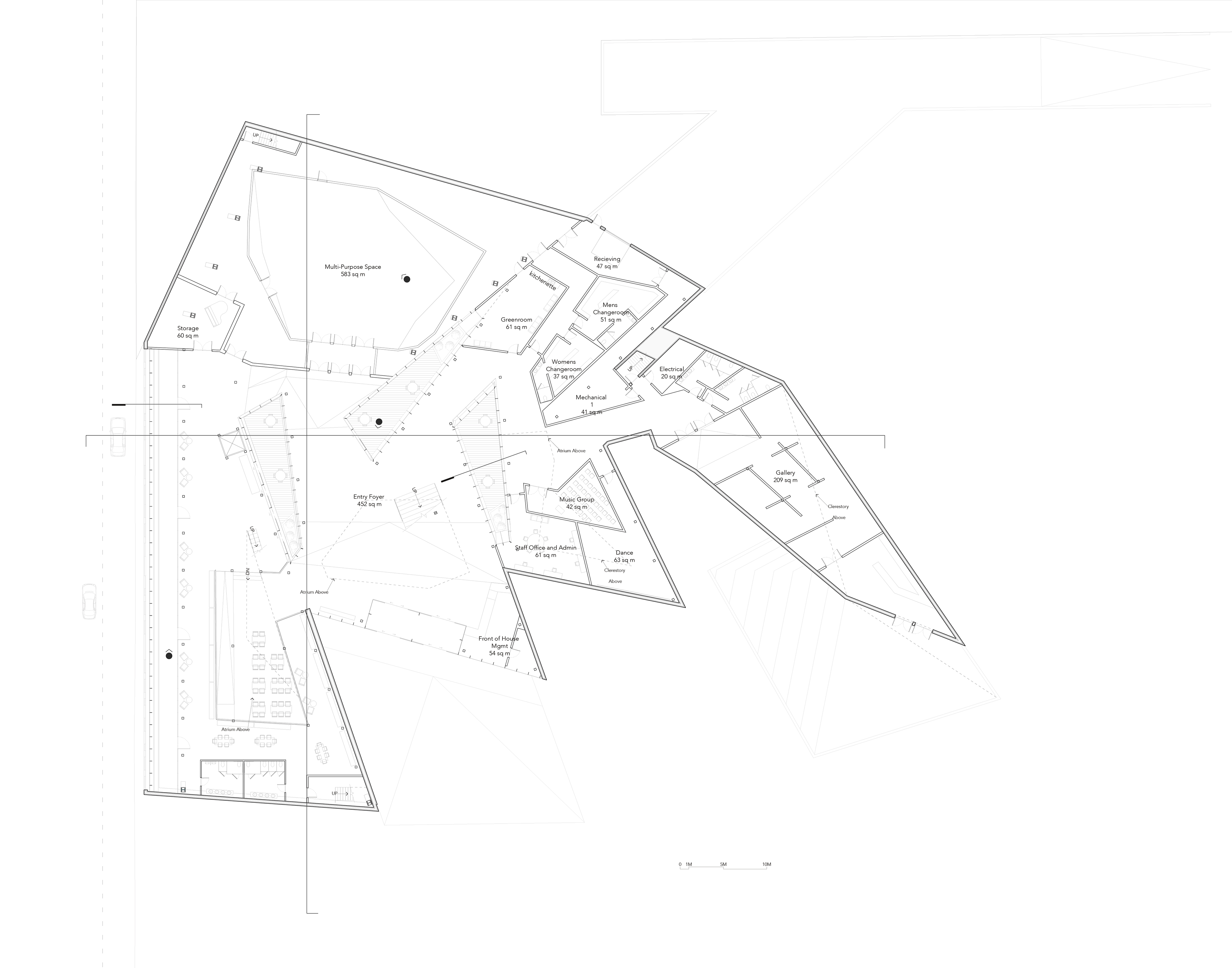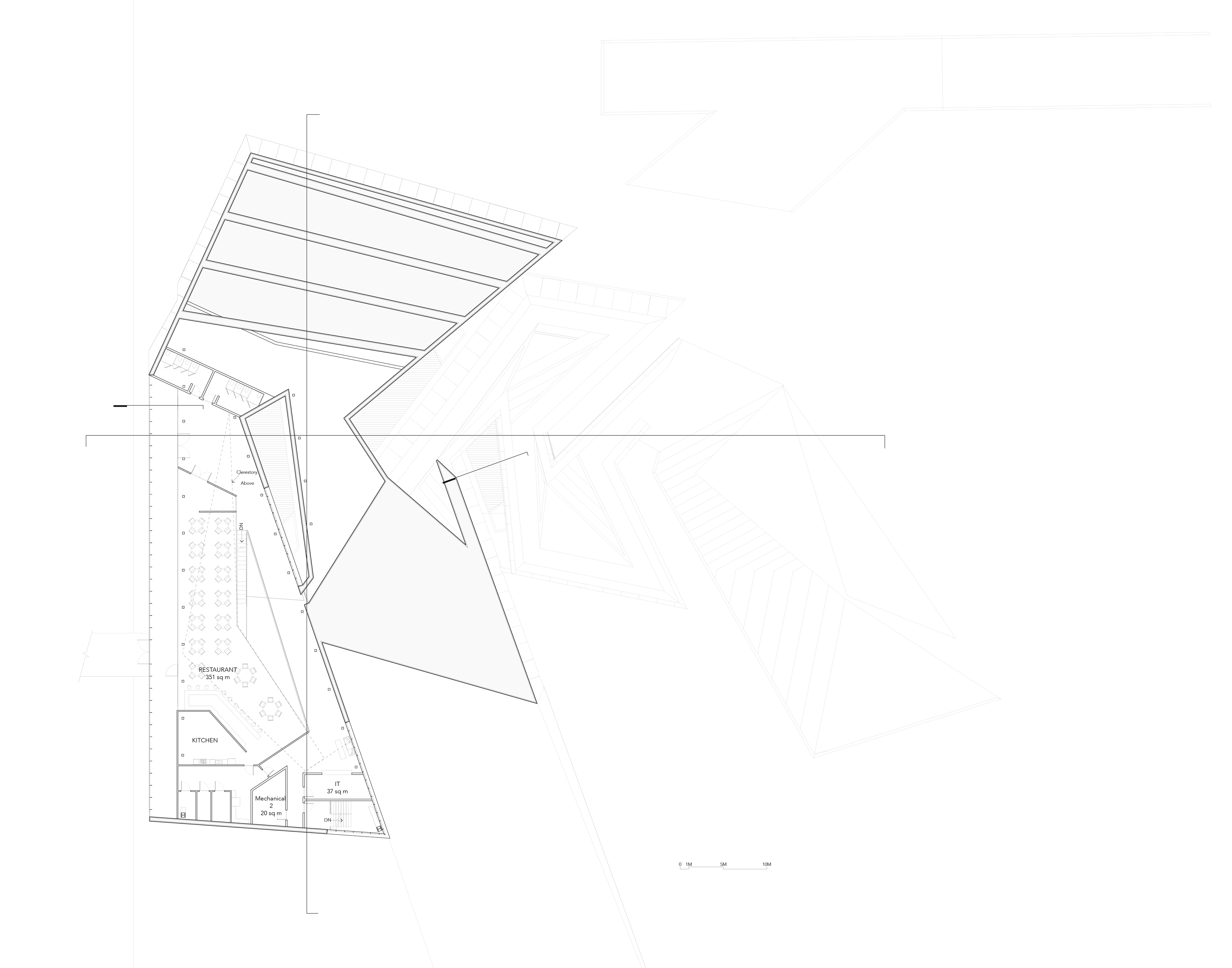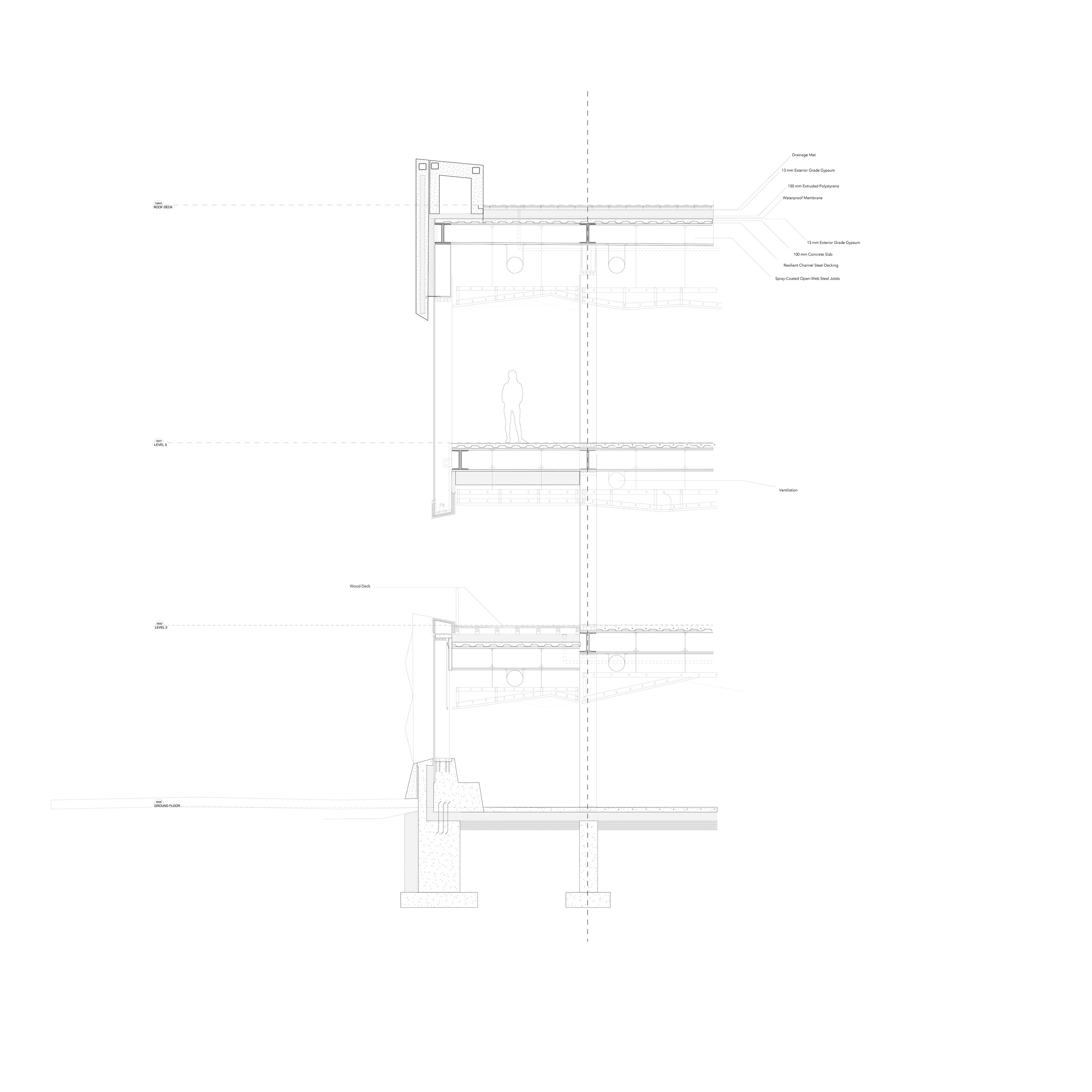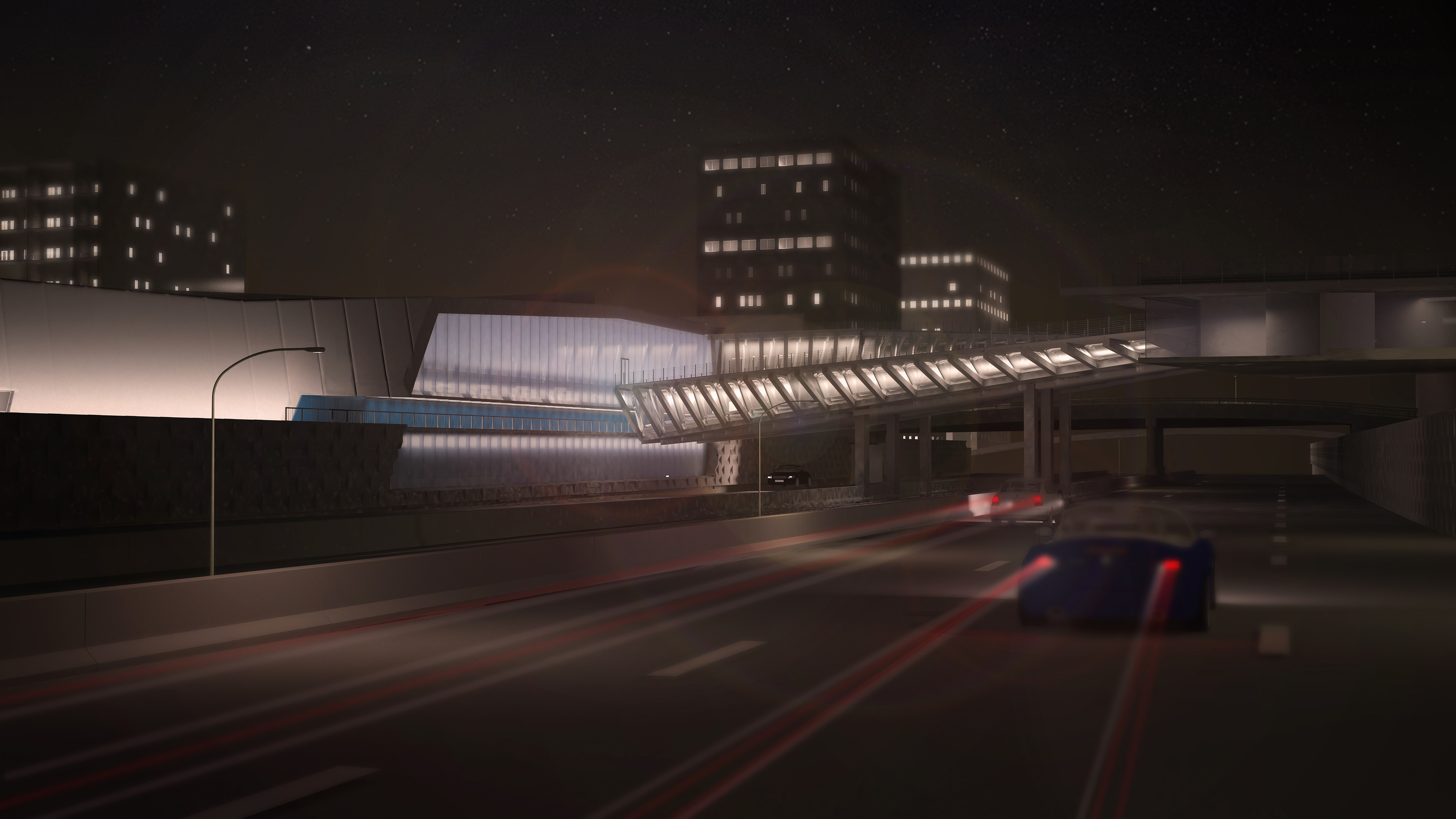Hide & See
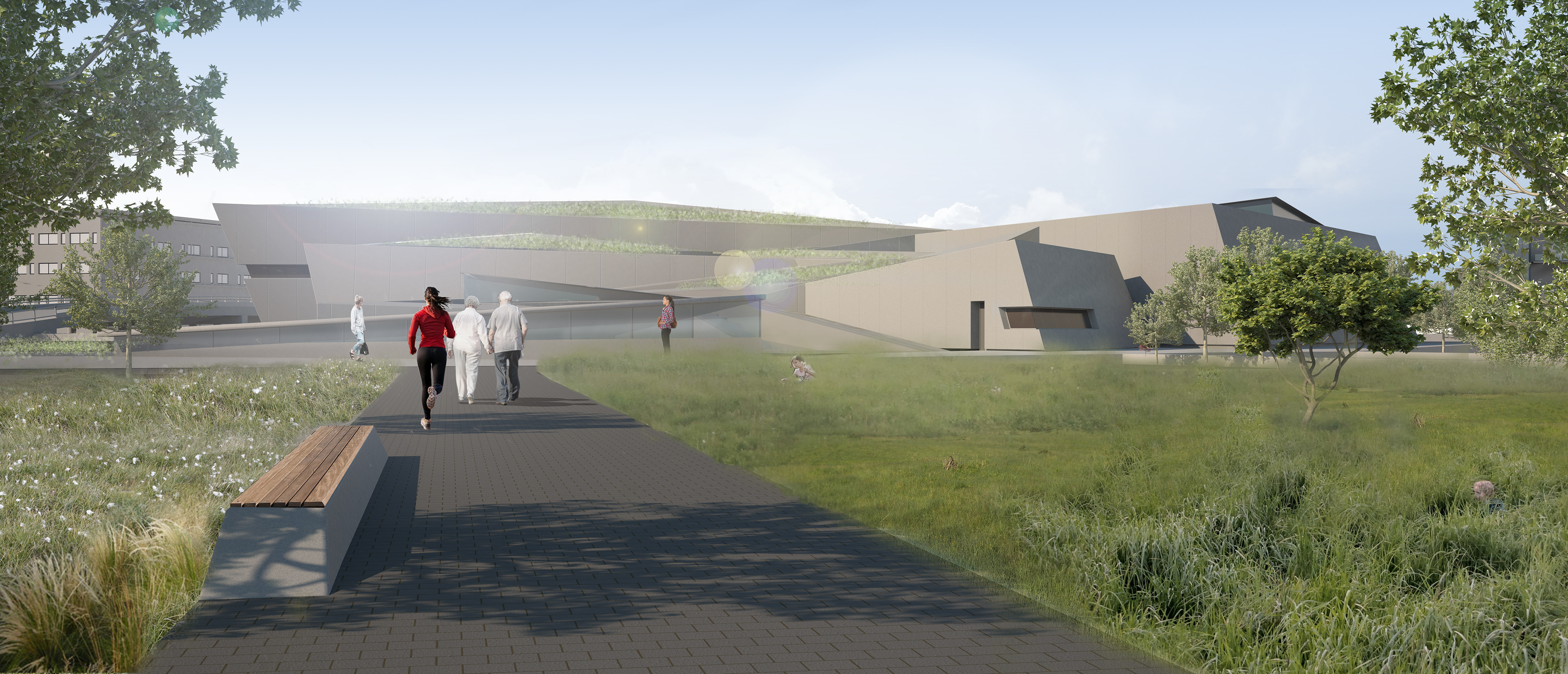
Hide and See proposes to create a series of phenomenological instances stemming from cuts and incisions, punctures, and the burying of heavy mass. As the building conceals itself from the viewer, its true form remains experientially obscure. A traversable landmass rises steady from the earth, zig-zagging through the terrain, moving west. From a distance the volume appears fairly opaque: a mass that has merged with the adjacent landscape. But as visitors make their way over its top they discover moments of translucency, instances in which the volume has been punctured. Pockets of light are projected out into the night sky. As the volume ascends to meet the Allen Expressway, it is severed by the flow of motorists, a dramatic incision that results in a window to the earth.
Meanwhile, as cars perpetually race by, pedestrians are invited to enjoy the view. On the West side of the Allen, pedestrians find themselves suspended over the freeway, cradled in an observatory of glass. But the introverted space is measurably counter-balanced by the larger curtain wall staring back – a foreshadowing of the view available from inside the earth. As visitors make their way in grand procession over a bridge, they come to occupy the interior of the landform. From within an interstitial glass skin, visitors find moments of acoustic solace: the earth muffling the roar of the traffic; a meditation on the rush of the everyday.
Moving deep inside the volume, visitors meander the concrete floors, waltzing under a sculptural drapery, finding new perspectives around and through the deep wells of light shining from above. As walls slope both in and out of space, the faint sound of musical instruments can be heard reflecting off the folded inside. Towards the east, visitors are offered an appreciation of a modest elevation. Connecting again with the outdoors and emerging out onto the open grass, occupants see a sculptural form to the north, hidden in the trees – an air intake, nobly mounted above a garden shed. Long grasses cover the landscape in patchwork, and maple trees accent the resulting elevations – ribbons of windows that wind along the building’s face. Various corners of the site, both inside and out, hide away from the eye of the viewer. Every winding corner presents a new perspective, shifting, and unsteady. Even the building’s mechanisms find refuge in the poché. Twisting under the skin, services exchange air, water, and energy through deep passages underground. Each visit provides a new opportunity for chance, and reflection.


